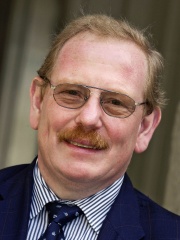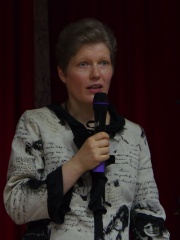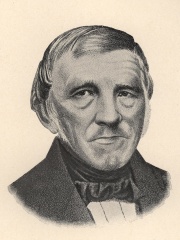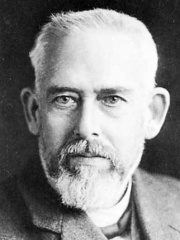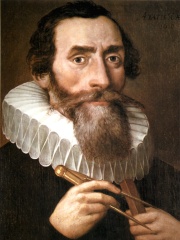
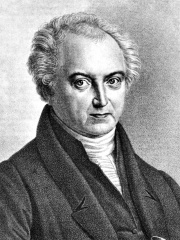

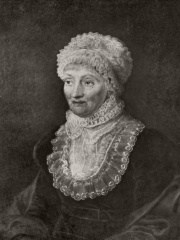
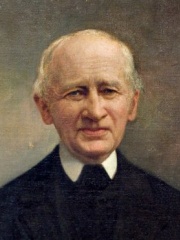

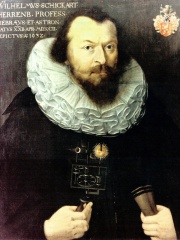
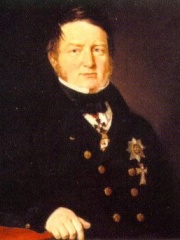
The Most Famous
ASTRONOMERS from Germany
This page contains a list of the greatest German Astronomers. The pantheon dataset contains 644 Astronomers, 78 of which were born in Germany. This makes Germany the birth place of the 2nd most number of Astronomers.
Top 10
The following people are considered by Pantheon to be the top 10 most legendary German Astronomers of all time. This list of famous German Astronomers is sorted by HPI (Historical Popularity Index), a metric that aggregates information on a biography's online popularity. Visit the rankings page to view the entire list of German Astronomers.

1. Johannes Kepler (1571 - 1630)
With an HPI of 89.24, Johannes Kepler is the most famous German Astronomer. His biography has been translated into 149 different languages on wikipedia.
Johannes Kepler (27 December 1571 – 15 November 1630) was a German astronomer, mathematician, astrologer, natural philosopher and writer on music. He is a key figure in the 17th-century Scientific Revolution, best known for his laws of planetary motion, and his books Astronomia nova, Harmonice Mundi, and Epitome Astronomiae Copernicanae. The variety and impact of his work made Kepler one of the founders and fathers of modern astronomy, the scientific method, natural science, and modern science. He has been described as the "father of science fiction" for his novel Somnium. Kepler was a mathematics teacher at a seminary school in Graz, where he became an associate of Prince Hans Ulrich von Eggenberg. Later he became an assistant to the astronomer Tycho Brahe in Prague, and eventually the imperial mathematician to Emperor Rudolf II and his two successors Matthias and Ferdinand II. He also taught mathematics in Linz, and was an adviser to General Wallenstein. Kepler lived in an era when there was no clear distinction between astronomy and astrology, but there was a strong division between astronomy (a branch of mathematics within the liberal arts) and physics (a branch of natural philosophy). Kepler also incorporated religious arguments and reasoning into his work, motivated by the religious conviction and belief that God had created the world according to an intelligible plan that is accessible through the natural light of reason. Kepler described his new astronomy as "celestial physics", as "an excursion into Aristotle's Metaphysics", and as "a supplement to Aristotle's On the Heavens", transforming the ancient tradition of physical cosmology by treating astronomy as part of a universal mathematical physics. Additionally, he did fundamental work in the field of optics, being named the father of modern optics, in particular for his Astronomiae pars optica. He also invented an improved version of the refracting telescope, the Keplerian telescope, which became the foundation of the modern refracting telescope, while also improving on the telescope design by Galileo Galilei, who mentioned Kepler's discoveries in his work. He postulated the Kepler conjecture. Kepler influenced among others Isaac Newton, providing one of the foundations for his theory of universal gravitation.

2. Heinrich Wilhelm Matthias Olbers (1758 - 1840)
With an HPI of 80.29, Heinrich Wilhelm Matthias Olbers is the 2nd most famous German Astronomer. His biography has been translated into 63 different languages.
Heinrich Wilhelm Matthias Olbers (; German: [ˈɔlbɐs]; 11 October 1758 – 2 March 1840) was a German astronomer. He found a convenient method of calculating the orbit of comets, and in 1802 and 1807, discovered the second and the fourth asteroids Pallas and Vesta.

3. William Herschel (1738 - 1822)
With an HPI of 80.07, William Herschel is the 3rd most famous German Astronomer. His biography has been translated into 100 different languages.
Frederick William Herschel ( HUR-shəl; German: Friedrich Wilhelm Herschel [ˈfʁiːdʁɪç ˈvɪlhɛlm ˈhɛʁʃl̩]; 15 November 1738 – 25 August 1822) was a German-British astronomer and composer. He frequently collaborated with his younger sister and fellow astronomer Caroline Herschel. Born in the Electorate of Hanover, he followed his father into the military band of Hanover, before immigrating to Britain in 1757 at the age of 19. Taking an interest in astronomy in 1766, Herschel constructed his first large telescope in 1774, after which he spent nine years carrying out sky surveys to investigate double stars. Herschel published catalogues of nebulae in 1802 (2,500 objects) and in 1820 (5,000 objects). The resolving power of the Herschel telescopes revealed that many objects called nebulae in the Messier catalogue were actually clusters of stars. On 13 March 1781 while making observations he made note of a new object in the constellation of Gemini. This would, after several weeks of verification and consultation with other astronomers, be confirmed to be a new planet, eventually given the name of Uranus. This was the first planet to be discovered since antiquity, and Herschel became famous overnight. As a result of this discovery, George III appointed him Court Astronomer. He was elected a Fellow of the Royal Society and grants were provided for the construction of new telescopes. Herschel pioneered the use of astronomical spectrophotometry, using prisms and temperature measuring equipment to measure the wavelength distribution of stellar spectra. In the course of these investigations, Herschel discovered infrared radiation. Other work included an improved determination of the rotation period of Mars, the discovery that the Martian polar caps vary seasonally, the discovery of Titania and Oberon (moons of Uranus) and Enceladus and Mimas (moons of Saturn). Herschel was made a Knight of the Royal Guelphic Order in 1816. He was the first President of the Royal Astronomical Society when it was founded in 1820. He died in August 1822, and his work was continued by his only son, John Herschel.

4. Caroline Herschel (1750 - 1848)
With an HPI of 75.21, Caroline Herschel is the 4th most famous German Astronomer. Her biography has been translated into 65 different languages.
Caroline Lucretia Herschel ( HUR-shəl, HAIR-shəl, German: [kaʁoˈliːnə ˈhɛʁʃl̩]; 16 March 1750 – 9 January 1848) was a German astronomer, whose most significant contributions to astronomy were the discoveries of several comets, including the periodic comet 35P/Herschel–Rigollet, which bears her name. She was the younger sister of astronomer William Herschel, with whom she worked throughout her career. She was the first woman to receive a salary as a scientist and the first woman in England to hold a government position. She was also the first woman to publish scientific findings in the Philosophical Transactions of the Royal Society, to be awarded a Gold Medal of the Royal Astronomical Society (1828), and to be named an honorary Member of the Royal Astronomical Society (1835, with Mary Somerville). She was named an honorary member of the Royal Irish Academy (1838). The King of Prussia presented her with a Gold Medal for Science on the occasion of her 96th birthday (1846).
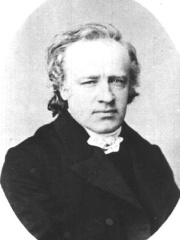
5. Heinrich Louis d'Arrest (1822 - 1875)
With an HPI of 74.38, Heinrich Louis d'Arrest is the 5th most famous German Astronomer. His biography has been translated into 45 different languages.
Heinrich Louis d'Arrest (13 August 1822 – 14 June 1875; German pronunciation: [daˈʁɛ] ) was a German astronomer, born in Berlin. His name is sometimes given as Heinrich Ludwig d'Arrest.

6. Johann Gottfried Galle (1812 - 1910)
With an HPI of 73.80, Johann Gottfried Galle is the 6th most famous German Astronomer. His biography has been translated into 59 different languages.
Johann Gottfried Galle (9 June 1812 – 10 July 1910) was a German astronomer from Radis, Germany, at the Berlin Observatory who, on 23 September 1846, with the assistance of student Heinrich Louis d'Arrest, was the first person to view and identify the planet Neptune. Urbain Le Verrier had predicted the existence and position of Neptune, and sent the coordinates to Galle, asking him to verify. Galle found Neptune in the same night he received Le Verrier's letter, within 1° of the predicted position. The discovery of Neptune is widely regarded as a dramatic validation of celestial mechanics, and is one of the most remarkable moments of 19th-century science.

7. Johann Bayer (1572 - 1625)
With an HPI of 72.59, Johann Bayer is the 7th most famous German Astronomer. His biography has been translated into 52 different languages.
Johann Bayer (German pronunciation: [ˈjoːhan ˈbaɪɐ]; 1572 – 7 March 1625) was a German lawyer and uranographer (celestial cartographer). He was born in Rain in 1572. In 1592, aged 20, he began his study of philosophy and law at the University of Ingolstadt, after which he moved to Augsburg to begin work as a lawyer, becoming legal adviser to the city council in 1612. Bayer had several interests outside his work, including archaeology and mathematics. However, he is primarily known for his work in astronomy; particularly for his work on determining the positions of objects on the celestial sphere. He remained unmarried and died in 1625. Bayer's star atlas Uranometria Omnium Asterismorum ("Uranometry of all the asterisms") was first published in 1603 in Augsburg and dedicated to two prominent local citizens. This was the first atlas to cover the entire celestial sphere. It was based upon the work of Tycho Brahe and may have borrowed from Alessandro Piccolomini's 1540 star atlas, De le stelle fisse ("Of the fixed stars"), although Bayer included an additional 1,000 stars. The Uranometria introduced a new system of star designation which has become known as the Bayer designation. Bayer's atlas included twelve new constellations invented a few years earlier to fill in the far south of the night sky, which was unknown to ancient Greece and Rome. The crater Bayer on the Moon is named after him.

8. Wilhelm Schickard (1592 - 1635)
With an HPI of 72.18, Wilhelm Schickard is the 8th most famous German Astronomer. His biography has been translated into 35 different languages.
Wilhelm Schickard (22 April 1592 – 24 October 1635) was a German professor of Hebrew and astronomy who became famous in the second part of the 20th century after Franz Hammer, a biographer (along with Max Caspar) of Johannes Kepler, claimed that the drawings of a calculating clock, predating the public release of Pascal's calculator by twenty years, had been discovered in two unknown letters written by Schickard to Johannes Kepler in 1623 and 1624. Hammer asserted that because these letters had been lost for three hundred years, Blaise Pascal had been called and celebrated as the inventor of the mechanical calculator in error during all this time. After careful examination it was found that Schickard's drawings had been published at least once per century starting from 1718, that his machine was not complete and required additional wheels and springs and that it was designed around a single tooth carry mechanism that didn't work properly when used in calculating clocks. Schickard's machine was the first of several designs of direct entry calculating machines in the 17th century (including the designs of Blaise Pascal, Tito Burattini, Samuel Morland and René Grillet). The Schickard machine was particularly notable for its integration of an ingenious system of rotated Napier's bones for multiplication with a first known design for an adding machine, operated by rotating knobs for input, and with a register of rotated numbers showing in windows for output. Taton has argued that Schickard's work had no impact on the development of mechanical calculators. However, whilst there can be debate about what constitutes a "mechanical calculator" later devices, such as Moreland's multiplying and adding instruments when used together, Caspar Schott's Cistula, René Grillet's machine arithmétique, and Claude Perrault's rhabdologique at the end of the century, and later, the Bamberger Omega developed in the early 20th century, certainly followed the same path pioneered by Schickard with his ground breaking combination of a form of Napier's bones and adding machine designed to assist multiplication. Schickard has been called "the father of the computer age".

9. Friedrich Georg Wilhelm von Struve (1793 - 1864)
With an HPI of 72.16, Friedrich Georg Wilhelm von Struve is the 9th most famous German Astronomer. His biography has been translated into 50 different languages.
Friedrich Georg Wilhelm von Struve (Russian: Василий Яковлевич Струве, romanized: Vasily Yakovlevich Struve; 15 April 1793 – 23 November [O.S. 11 November] 1864) was a Baltic German astronomer and geodesist. He is best known for studying double stars and initiating a triangulation survey later named Struve Geodetic Arc in his honor.
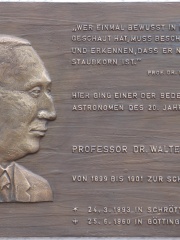
10. Walter Baade (1893 - 1960)
With an HPI of 71.15, Walter Baade is the 10th most famous German Astronomer. His biography has been translated into 56 different languages.
Wilhelm Heinrich Walter Baade (March 24, 1893 – June 25, 1960) was a German astronomer who worked in the United States from 1931 to 1959.
People
Pantheon has 78 people classified as German astronomers born between 1477 and 1980. Of these 78, 3 (3.85%) of them are still alive today. The most famous living German astronomers include Reinhard Genzel, Eva Grebel, and Anna Frebel. The most famous deceased German astronomers include Johannes Kepler, Heinrich Wilhelm Matthias Olbers, and William Herschel.
Living German Astronomers
Go to all RankingsReinhard Genzel
1952 - Present
HPI: 66.82
Eva Grebel
1966 - Present
HPI: 45.40
Anna Frebel
1980 - Present
HPI: 39.42
Deceased German Astronomers
Go to all RankingsJohannes Kepler
1571 - 1630
HPI: 89.24
Heinrich Wilhelm Matthias Olbers
1758 - 1840
HPI: 80.29
William Herschel
1738 - 1822
HPI: 80.07
Caroline Herschel
1750 - 1848
HPI: 75.21
Heinrich Louis d'Arrest
1822 - 1875
HPI: 74.38
Johann Gottfried Galle
1812 - 1910
HPI: 73.80
Johann Bayer
1572 - 1625
HPI: 72.59
Wilhelm Schickard
1592 - 1635
HPI: 72.18
Friedrich Georg Wilhelm von Struve
1793 - 1864
HPI: 72.16
Walter Baade
1893 - 1960
HPI: 71.15
Johann Franz Encke
1791 - 1865
HPI: 70.85
Max Wolf
1863 - 1932
HPI: 70.70
Overlapping Lives
Which Astronomers were alive at the same time? This visualization shows the lifespans of the 25 most globally memorable Astronomers since 1700.

